|
Welcome to the Official Website for GBW Associates, LLC.
 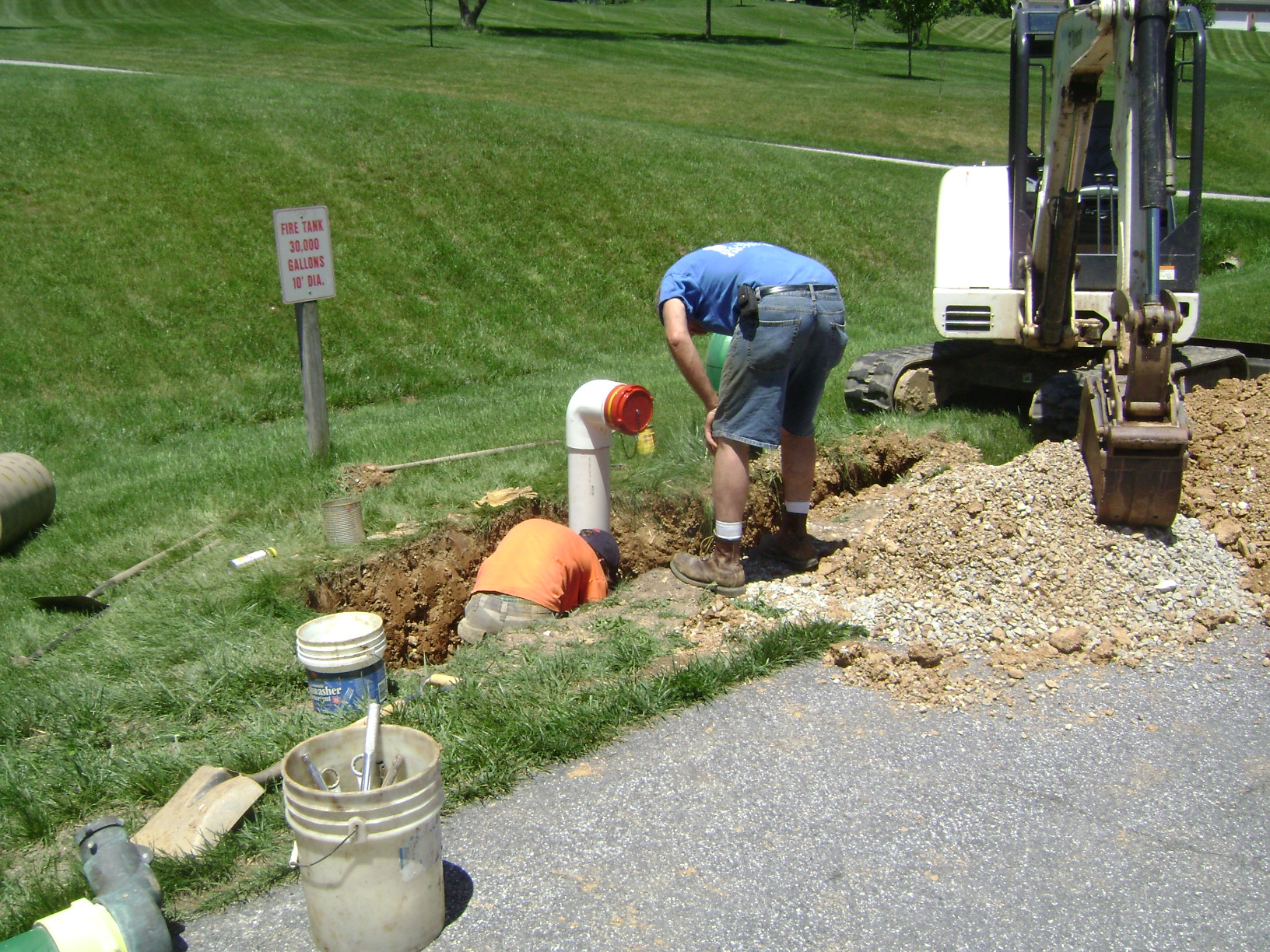 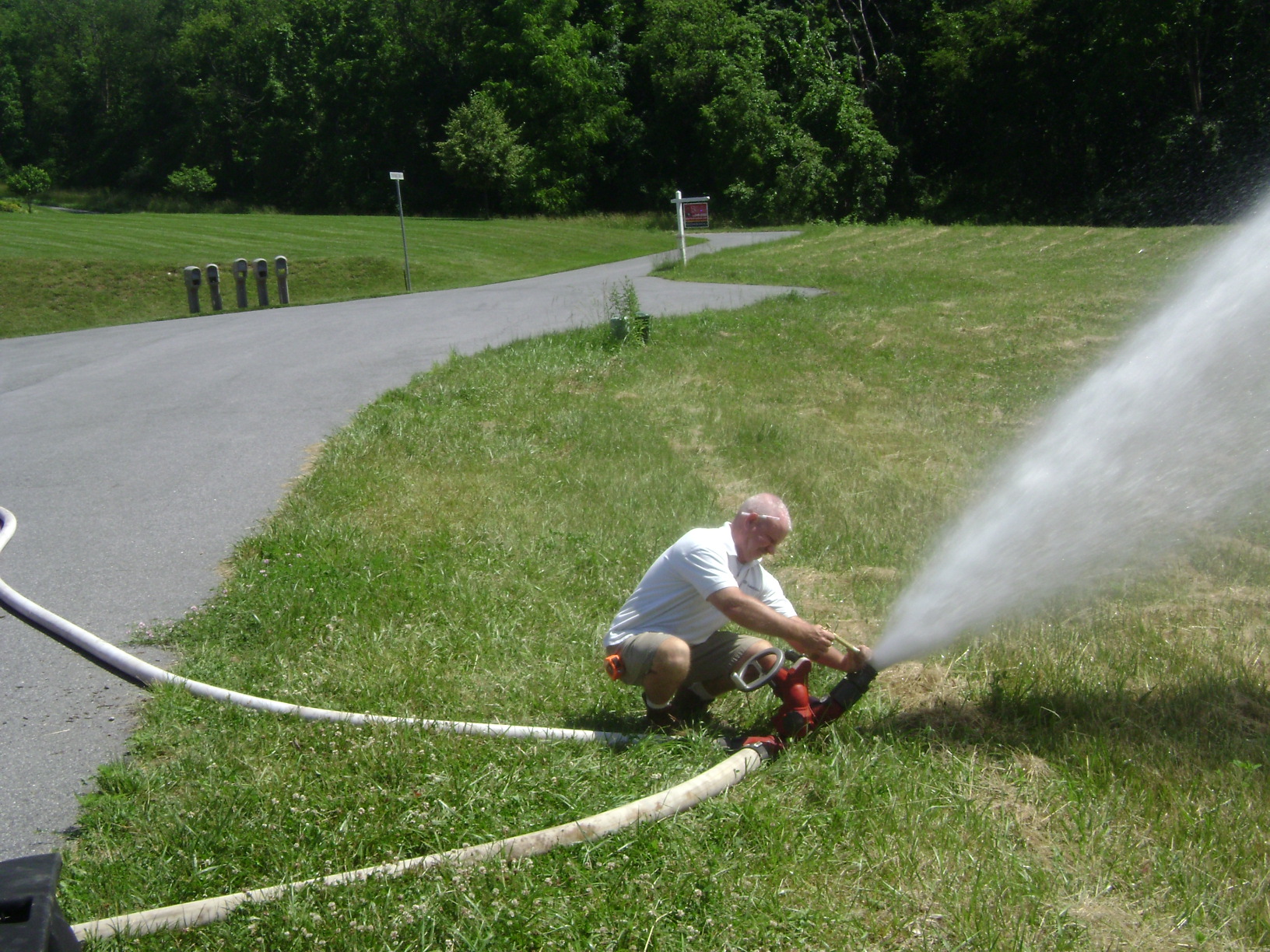 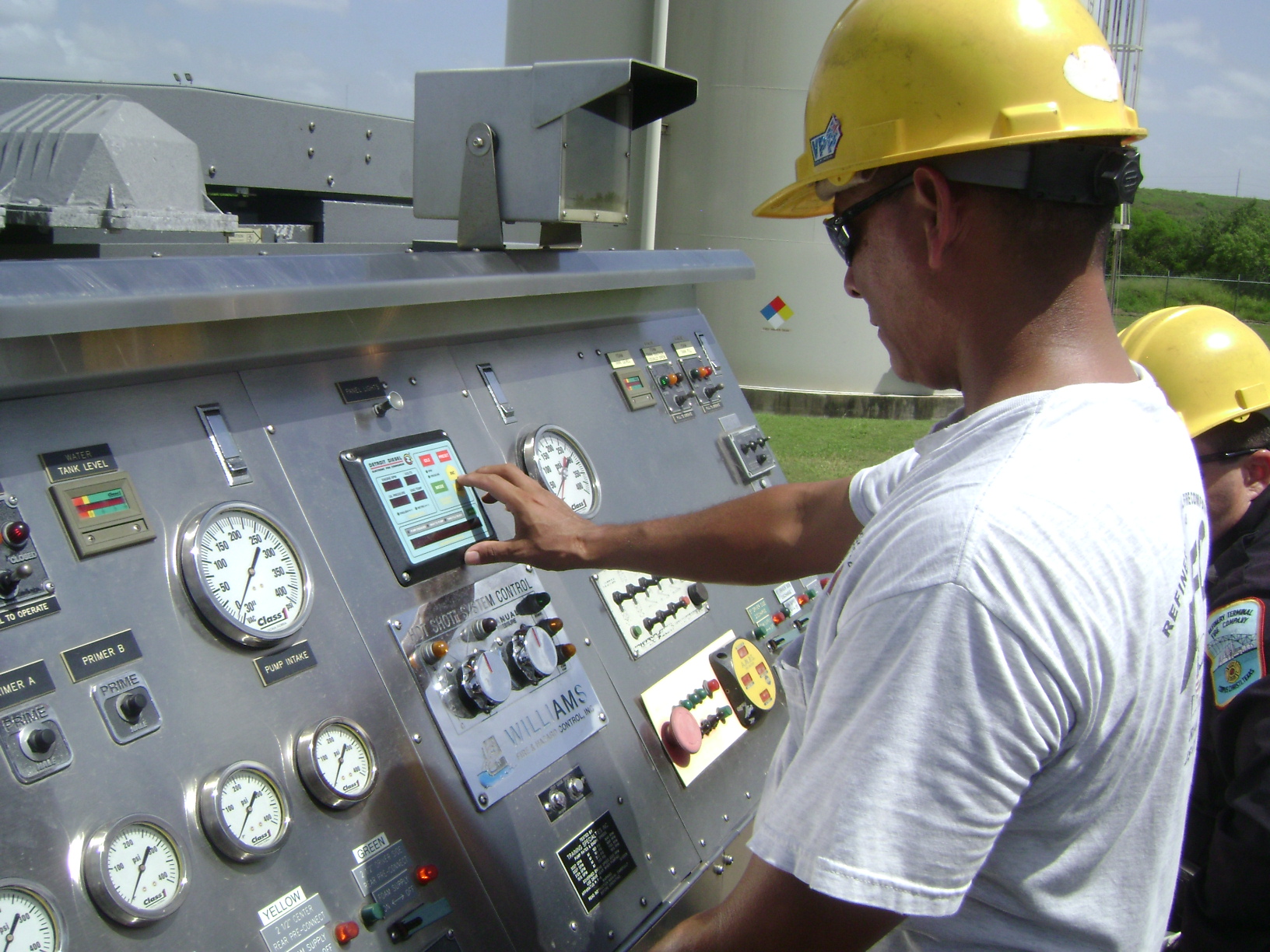 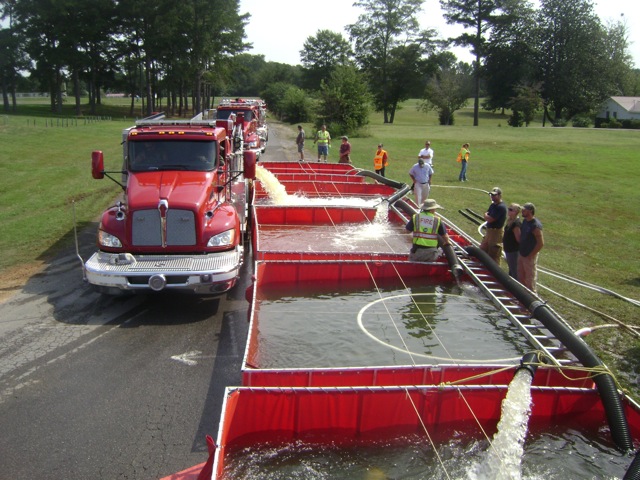
GotBigWater is the official website of GBW Associates, LLC, a privately owned training, consulting, and design firm located in Westminster, Maryland. Our specialty is water supply for public and private fire protection. We at GBW Associates, LLC are known for our training programs, our consulting services, our dry hydrants, and our testing services. Over the years, we have completed projects in over 42 different states and Canada ranging from rural water supply and incident command seminars to ISO water supply assessments to community master planning.
Use the menu at the left to take a look at our services and to contact us. Be sure to check out the News Archive and Big Water Information sections for a whole bunch of information on water supply delivery operations.
Scroll down to see our recent activities, upcoming events, and website updates.
* * *
Be sure to join the Members Area to discuss water supply issues, view our document library, and receive announcement notices concerning our website and our services- it is FREE!
* * *
Upcoming Seminars, Courses, and Drills
Click on image to view flyer.
| |
|
|
|
| |
|
|
|
| |
 |
 |
|
| |
Pennsylvania |
Iowa |
|
Hauling Water - East Alabama Style!
President Mark Davis, October 17
On Sunday, October 13th....a bunch of folks from Tallapoosa County, Alabama and the surrounding area participated in our 2-hr rural water supply drill as part of our 16-hr Rural Water Supply Operations Seminar. The program was sponsored by the East Alabama Training Association and the Alexander City, Dadeville, Stillwaters, and Union Fire Departments. The seminar was hosted by the Central Alabama ... (Full Story & Photos)
|

A 4-dump tank operation was used to support the 1000 gpm flow.
|

|

Carrying more is better.
|
Suction Hose #14 - More Makes It Easier
President Mark Davis, October 10
Another simple but effective photo showing the importance of carrying more than the standard 20-feet of suction in the rural environment. This pumper's 30-feet of suction hose allowed the crew to set-up a dump tank behind the pumper and still reach it with the suction hose carried on the rig. The use of the Fol Da Tank through-the-wall flange eliminated the "hump" in the suction hose as well...thus ... (Full Story & Photos)
|

|
Fill Site Operations #16 - Supporting Vacuum Tanker Loading Operations
President Mark Davis, October 03
Vacuum tankers are most efficient in their loading process. The preferred loading process is generally to get the vacuum tanker close enough to the water source so that the rig can self-load using the suction hose it brought to the game. Sometimes, access to the water is limited and you have to figure out how to bring the water closer to the vacuum tanker. We commonly call the process an "open relay" ... (Full Story & Photos)
|

An open-relay used to keep this dump tank full for vacuum tanker self-loading operations.
|

|

Four dump tanks, two fill sites, and eight tankers were used to support this 1500 gpm operation. (Photo courtesy Luke Zimmerman)
|
Hauling Water - Pennsylvania Style! Our Newest Member of the 1000 GPM Club
President Mark Davis, September 26
On Sunday afternoon, September 22nd, about 40 folks from the Lycoming County, Pennsylvania area got together to haul water for 2-hours uninterrupted using 8 tankers and 2 fill sites. The 2-hr drill took place in Montoursville, PA and culminated our 16-hr Rural Water Supply Operations Seminar that was sponsored by the Western Branch Fireman's Association and hosted by the Montoursville FD. The drill ... (Full Story & Photos)
|

|
Fill Site Operations #15 - Keep an Eye on the Pressure
President Mark Davis, September 12
In our seminars, we speak about the pressure limitations on fill lines when loading tankers. Absent a label on the rig, we normally offer 100 psi as the pressure limit at the tank fill inlet. This is in line with most of the poly-tank builders today and we commonly see that pressure limitation number posted on the newer rigs.
The purpose then of this photo is for the folks physically connecting ... (Full Story & Photos)
|

80 psi....not 100 psi on this rig.
|

|

Besides bringing water and a dump tank, Tanker 300 (2021 4-Guys) brings a whole bunch of stuff to support rural water supply operations.
|
What's On Your Tanker #57 - The Denton Toolbox
President Mark Davis, September 05
Our seminar participants know we put a bunch of emphasis on tankers (tenders) being loaded up with usable equipment for dump site and fill site operations. These rigs are like the Snap-on Tool guys making the rounds from service facility to service facility. During our seminar in Caroline County, Maryland we got to see Denton VFC's Tanker 300 in action and were impressed with how they outfitted the ... (Full Story & Photos)
|

|
Hauling Water - Caroline County Style!
President Mark Davis, August 29
On Sunday, August 25th, about 35 members of the Preston VFC and surrounding fire departments gathered to haul water for about 2-hrs using tankers. The drill culminated our 16-hr Rural Water Supply Operations Seminar that was sponsored and hosted by the Preston VFC located in Caroline County, Maryland. Crews used a combination of nurse tanker and dump tank operations to support a peak flow of just ... (Full Story & Photos)
|

A peak flow of just under 1100 gpm was reached during the drill
|

|

Five tankers supported the 750 gpm flow using 3 dump tanks and one fill site.
|
Hauling Water - New Hampshire Seacoast Style!
President Mark Davis, August 21
On August 18th, around 30 members of the Stratham VFD (New Hampshire) and surrounding fire departments got together to haul water with tankers for 2-hrs. The drill was the culmination of our 16-hr Rural Water Supply Operations Seminar that was sponsored and hosted by the Stratham VFD. The seminar was our third visit to Stratham since 2023 and each time the folks have improved on their tanker operation ... (Full Story & Photos)
|
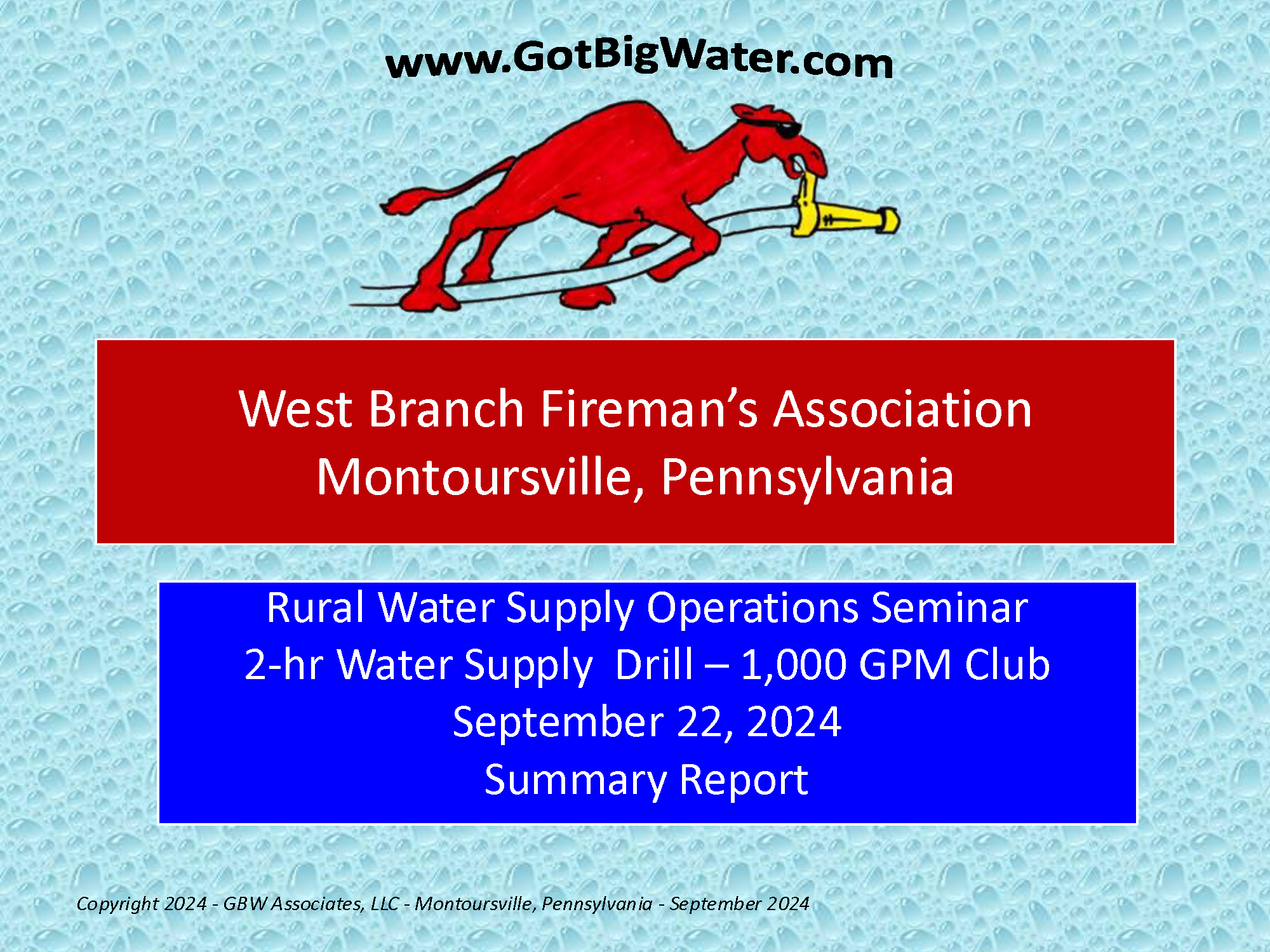






Your questions and feedback are important to us! If you have a question about water supply or pumps or FD stuff in general, join our Members area (for free) to post your inquiry. We will provide our thoughts and perhaps other folks in the field will provide theirs also.
Also - be sure to sign the guest book if this is your first time here - guestbook.
|


